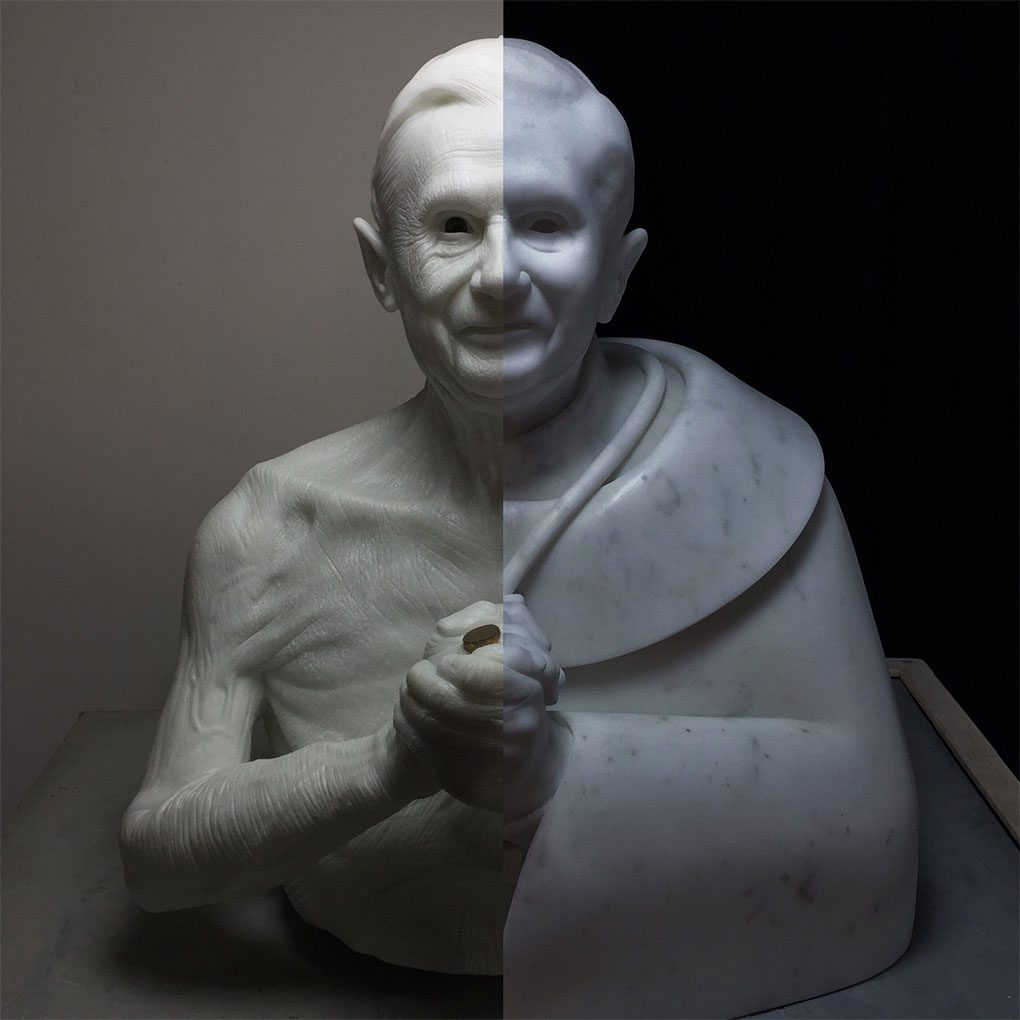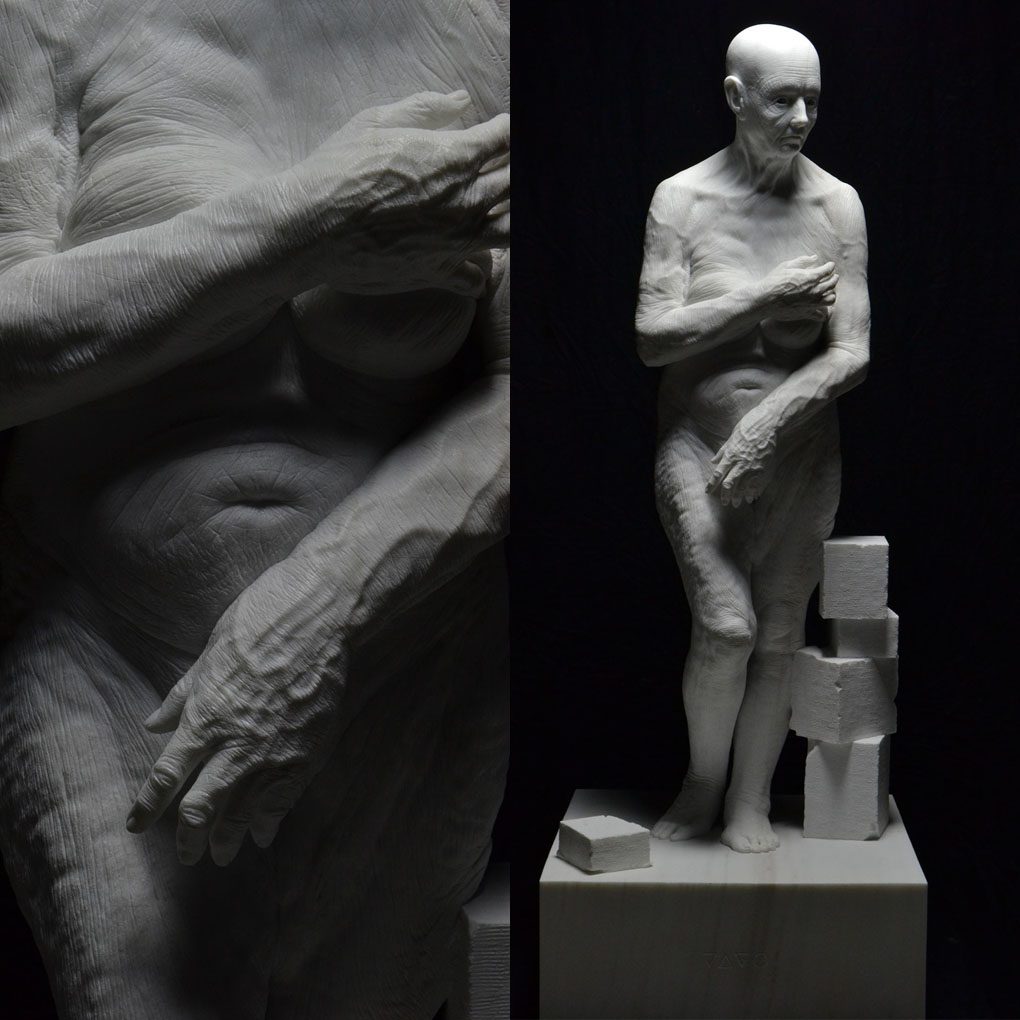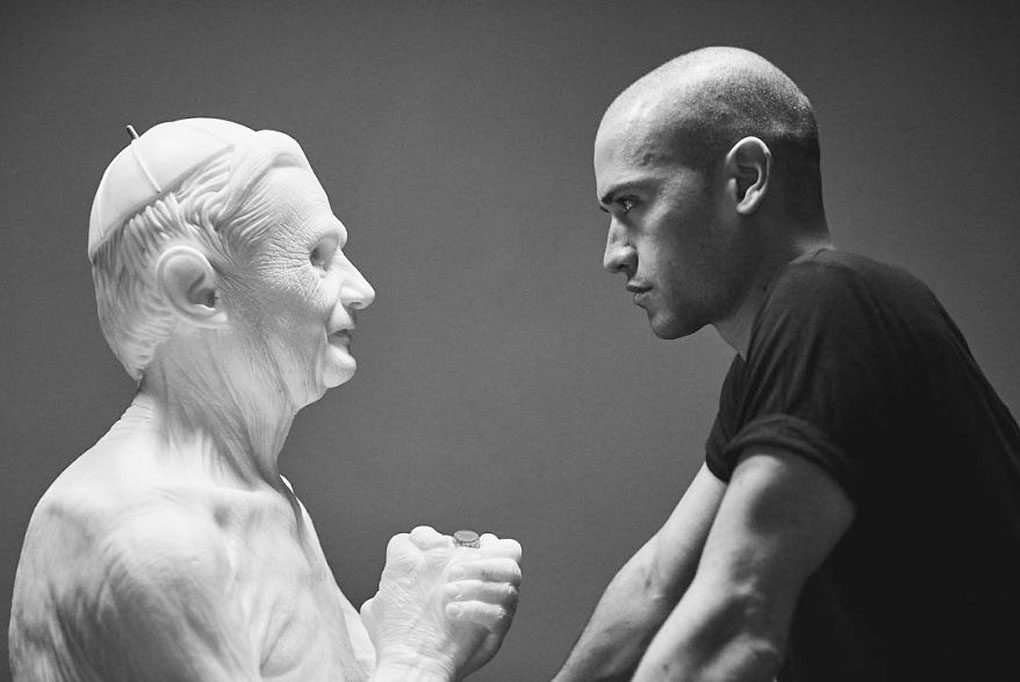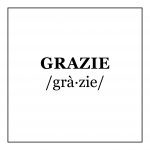JAGO

Accento
JAGO is not Michelangelo
Words by Kristal Trotter
As a kid, JAGO wanted to be like Michelangelo, but he’s not Michelangelo and that’s exactly his point.
Jacopo Cardillo, who goes by the artistic name JAGO, is a self-taught Italian sculptor who spent a brief period at Rome’s Accademia di Belle Arti. When he realized that his professors didn’t consider him capable or talented enough to do an exhibition at the Biennale of Venice, he left. His instincts proved him right, because if he hadn’t trusted his gut, he would still be sitting in a classroom waiting for approval instead of traveling between New York, Rome, Milan, China and Naples, all thanks to his work.
This is not just about following your instincts, it’s about having an understanding of your self worth and your capabilities.
When it comes to power dynamics and tradition in Italy’s prestigious art world, Jago explained it best in an interview at the Mugellini Festival in 2018 – “School is a fundamental thing. … It would be great if you could complete your path and at the same time keep one foot in it and one foot out of it.” With such a rich history of the greatest artists in the world, from Leonardo da Vinci, to Michelangelo, Botticelli, Caravaggio and so on, Italian art schools have a culture of forcing you to find your own artistic style, as if having the same style as one of the greats prevents you from being great. Jago continues by saying “ We are taught to shrink ourselves. When someone says that you need to shrink yourself because a person is an icon, it means that they want you to be at their level of mediocrity. Putting yourself beneath someone doesn’t mean you’re humble, it means you’re humiliating yourself.”
Jago noticed a huge misunderstanding of the concept of being humble, especially once he said that, as a kid, he wanted to be like Michelangelo, which has drawn a lot of criticism on social media. He is certain that there are no idols to venerate, there are only courageous human beings that were brave enough to make a big gesture; Michelangelo was a person that had the courage to do what he did. As Jago puts it, “To have courage is to give courage” and in aspiring to be like Michelangelo, now he has the courage to aim for greatness.

Image via jago.art
It takes courage to create a piece of art like Habemus Hominem (we have a man), a long transformation process through the course of 7 years. A huge risk for the artist, but destined to be iconic. Initially entitled Habemus Papam (we have a pope), the portrait of a fully cloaked Pope Benedict XVI was created for a competition for a Vatican commission, but due to its perforated eyes, it had not been selected. Jago stayed true to his vision and kept it the way he saw it, missing an important opportunity. Once he found out that Pope Benedict XVI had resigned, he decided to strip the original sculpture of its cloak, conceptually transitioning the pontiff back to the man, Joseph Ratzinger. Jago’s decision to fill in the eyes gave the already hyper-realistic bust its humanity, now capturing and following the viewer with its gaze.

Images via jago.art
It takes courage to create a sculpture like Venere (Venus), an art piece that defies the beauty standards presented to us by Renaissance artists like Botticelli. Jago’s Venere is an elderly woman who gracefully hides her naked body from the viewer and who’s beauty is not defined by aesthetics, but rather by a life that was lived.
Understanding the present is as important as studying the past.
Very active on social media, one of his followers asked him what the best path for entering the world of sculpting was, Jago’s response was to study finance, marketing and communication. He live streams his process on Facebook and Instagram, and provides video content on his YouTube channel.
“Can you imagine if Michelangelo could put a timelapse video of the realization of the David on Facebook? Ce te prego..lo vojo vede!” is his reaction in roman dialect.
He brings the sculpture to life by going beyond the sculpture itself. Using video animation for example. In his 2017 Apparato Circolatorio (circulatory system) exhibition, he sculpted 30 ceramic hearts that worked in relation to a video installment. Every heart rotated through a video loop. 30 fotograms of a heart pulse. Jago defines himself as a social artist, but this doesn’t take away from his art or his abilities as a sculpture, it’s rather an added value, because this is the world we live in and we need to use the tools that we have at our disposal.
His latest art piece is “Il figlio velato” (the veiled son), a sculpture donated to Rione Sanità, a neighborhood in Naples, and inspired by the “Christo velato” (veiled Christ) in the Sansevero Chapel. Check out the video in collaboration with Fanpage.it
In trying to be like Michelangelo, he grew to be the Jago of our generation.




